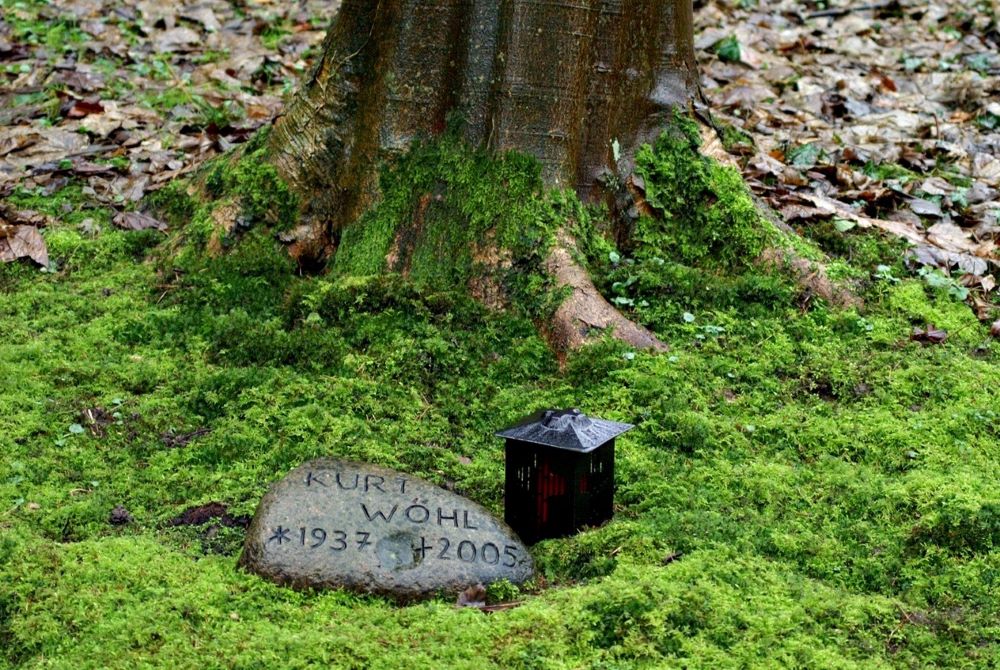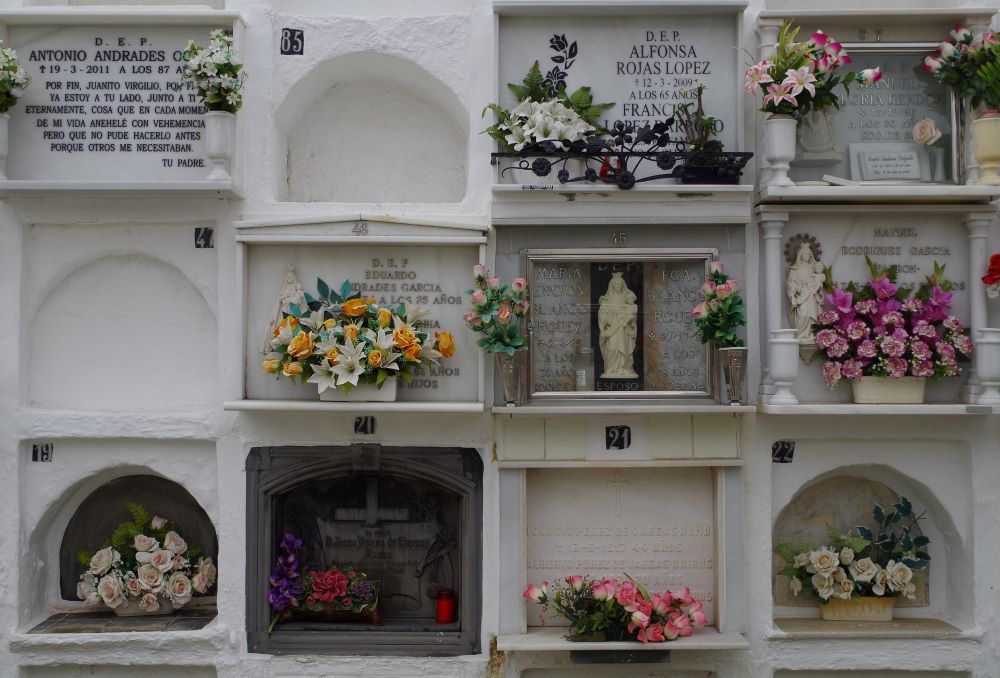
(Pixabay/Ulrich Welzel)
In June, the New York state legislature passed Senate Bill S5535, which authorizes the use of natural organic reduction — colloquially known as "human composting" — to dispose of a deceased human body. The bill is now awaiting Gov. Kathy Hochul's signature or veto, and lobbying efforts of advocates and opponents have recently ramped up. The New York State Catholic Conference has even provided a prepared message for Catholics to submit their objections to the governor. Catholics, however, need not oppose the measure and actually have moral reasons to support it.
The process of organic reduction involves placing the deceased body in a reusable vessel on a bed of organic materials and aerating it such that microbes and other bacteria thrive and, after about month or so, the body is converted into nutrient-rich soil. As mortician Caitlin Doughty notes, loved ones have the opportunity to view the body as it is placed in the vessel and add flowers, letters or other biodegradable mementos before the decomposition process begins. Furthermore, nothing about the process would prevent funerary rites as defined by the Catechism of the Catholic Church. The process already is legal in Washington, Oregon, Colorado, Vermont and California.
When similar legislation was debated in California, the California Catholic Conference opposed it on the basis that this method of treating human remains creates an "unfortunate spiritual, emotional, and psychological distancing from the deceased." New York's bishops object to the measure "because composting is a process typically used for household or agricultural waste, and does not provide the respect due to bodily remains." They further state "While not everyone shares the same beliefs with regard to the reverent and respectful treatment of human remains, we believe there are a great many New Yorkers who would be uncomfortable at best with this proposed composting/fertilizing method, which is more appropriate for vegetable trimmings and eggshells than for human bodies."
Throughout its more than two millennia of moral theological development, the Catholic Church has generally avoided simply relying on what makes people "uncomfortable" when determining moral liceity. Furthermore, highlighting that composting is a process also used for "agricultural waste" does not suffice as an argument against using this same process for human remains. After all, garbage is typically "buried" in landfills or "burned"; yet, the Catholic Church proclaims burial as a corporal work of mercy and, with conditions, allows for cremation.
Finally, as already noted, there is nothing about this process that would deny Catholic funerary rites or create undue "distance" from the deceased — at least not any more so than other licit funerary practices. Regardless of how one dies or how one's body is prepared for its final disposition, there is always a period when the body is removed from the presence of loved ones and either has its natural fluids removed and replaced with an embalming agent (a wholly unnatural treatment), is incinerated in a crematorium or is anatomically dissected over a period of months for the sake of medical education or other forms of scientific study.

(Pixabay/Daniel Wanke)
The two primary principles that undergird the church's view on the appropriate disposition of a deceased body is respect for the dignity of the person whose soul previously informed that body and hope in the body's resurrection at the end of time.
The metaphysical understanding of the human person developed by St. Thomas Aquinas and affirmed doctrinally by the 14th century Council of Vienne is as a hylomorphic unity of a rational soul informing matter to compose a living body supportive of intellective thought and volition. At death, the soul separates from its body and persists in an interim state until it re-informs its resurrected body.
Aquinas and other Scholastic theologians debated the nature of the resurrected body and its relation to the matter that constituted one's body before death. Aquinas concludes that, while there is a certain "fittingness" in God utilizing matter that had previously constituted one's body before death to constitute one's resurrected body, God can utilize any matter to reconstitute one's resurrected body insofar as the "blueprint" for the body is one's soul. Thus, it does not matter (no pun intended) what happens to one's body after death for God to be able to resurrect it.
This is one reason why the church supports organ donation without worrying about to whom a donated organ belongs at the Resurrection. The church also allows for autopsies and anatomical dissection for the purpose of medical education. Having personally witnessed how a human body appears after eight weeks of dissection by medical students at a Catholic medical school, I can attest that this practice — done with all due respect to the person who donated their body —nevertheless reduces the body to an object to be learned from; the body is subsequently cremated and the remains returned to the donor's family for its final repose.
Finally, while natural organic reduction differs from the practice known as "green burial," in which a body is wrapped in a biodegradable shroud and placed directly into the ground, its motivating reasons are similar and at least one religious community in Kentucky has begun practicing green burial.
With this philosophical background and established precedents in mind, we can now ask whether the process can be done in a way that respects the dignity of the person whose body now signifies their former presence in this world, as well as the decedent's and their loved ones' hope in their future resurrection? The answer is yes.

(Unsplash/Sandy Millar)
While it is true that a person or their family could request use of organic reduction with an erroneous mindset — e.g., as a sign of "fusion with Mother Nature or the universe, or as a stage in the cycle of regeneration" — such an intentional attitude is not entailed by the practice itself. This mirrors the church's teaching on cremation; while cremation should not be done for mal-intentions — i.e., to signify denial of belief in bodily resurrection — it can be licitly "chosen because of sanitary, economic or social considerations."
This brings us to the question of whether there are sufficient moral reasons for Catholics to request organic reduction for their remains? The answer is again yes, for two reasons. The first is Pope Benedict's and Pope Francis' calls to exercise proper stewardship with respect to the environment.
Natural organic reduction not only minimizes the negative impact on the environment by funerary practices associated with embalming, caskets and cremation, but also may positively contribute to ecological flourishing depending on the ultimate disposition of one's remains — i.e., if the roughly cubic yard of nutrient-rich soil generated from an organically reduced body were utilized to grow new flora. Instead of visiting and placing store-bought flowers by a marble headstone, loved ones could watch a tree fed by the decedent's remains grow from a sapling to a mighty oak within the blessed ground of a Catholic cemetery.
Advertisement
Another reason Catholics may elect to pursue natural organic reduction is that it is more economical, which is a legitimate moral concern given Catholic social teaching's call for a preferential option for the poor. The funeral home industry had a total market value of $16 billion in 2021, with the most revenue generated through burying whole bodies in caskets. Organic reduction can provide a more affordable alternative for low-income families living in both urban (where space is also a relevant consideration) and rural areas.
Following the Vatican's guidelines, there may certainly be illicit dispositions or uses of a deceased human body, but such potential abuses can occur regardless of whether the body is an intact corpse, has been reduced to ashes, or has been microbially decomposed.
Just as cremated remains may be interred in a Catholic cemetery either in the ground or in a columbarium (as the remains of both of my own parents were), a body that has been naturally organically reduced could also be interred in the same fashion or utilized as soil in a designated, blessed area to foster new life that will be memorialized by future generations, fulfilling in a more direct way the Biblical declaration that we are dust and to dust we shall return (Genesis 3:19).








